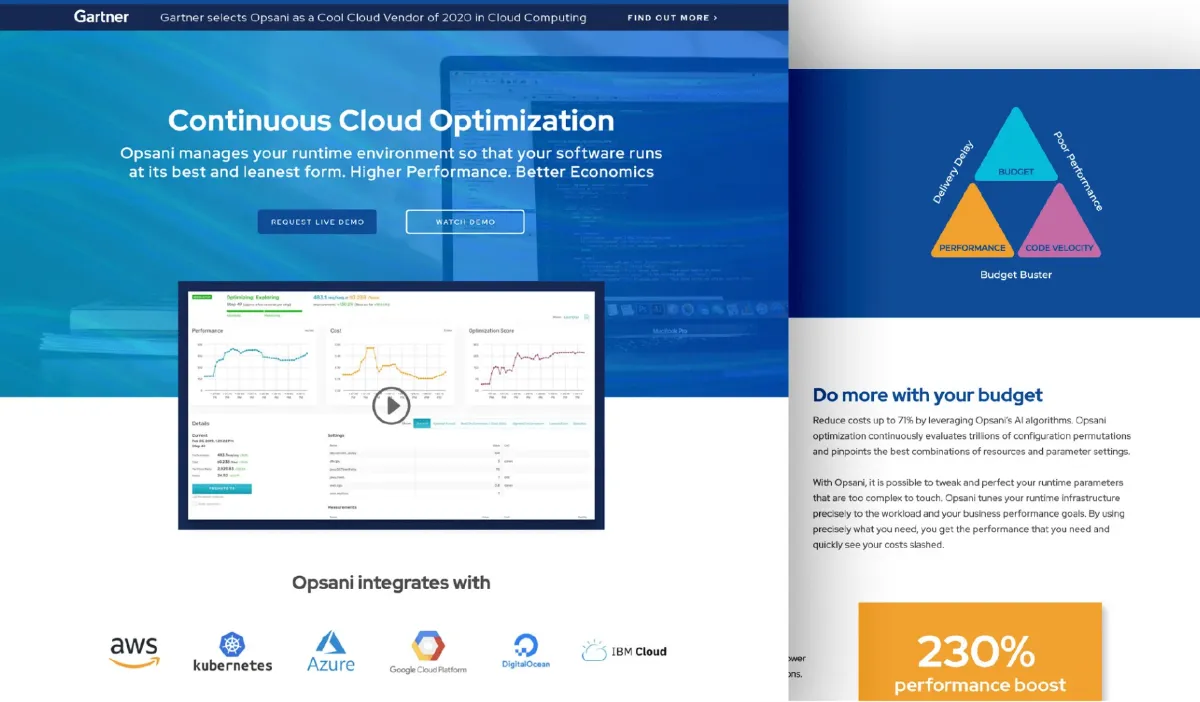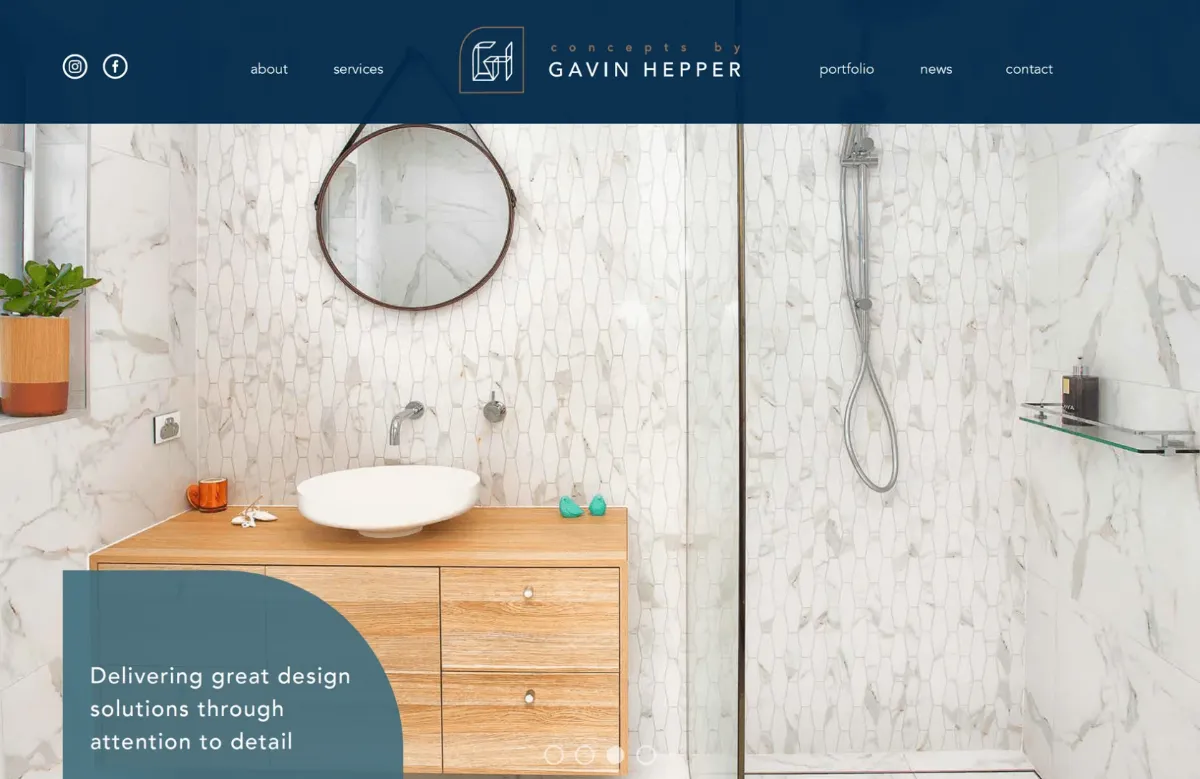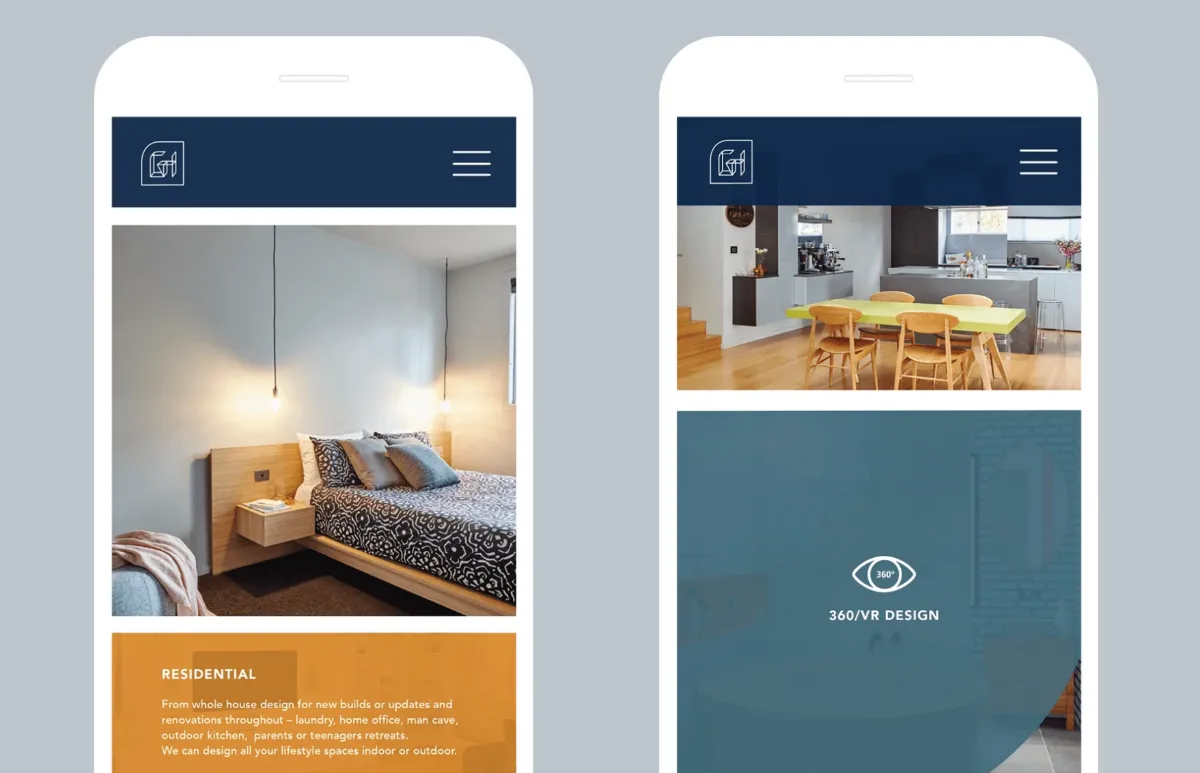How to Streamline your Web Design
Web design is the process of bringing your online vision to life. Sure, you can use a website builder and get a basic site up in minutes, but if you want something that stands out from the crowd, that’s where web design comes in.
Web Design as we Know it Today
Web design is a constantly evolving field. As we know it today, it is the process of creating websites and webpages that are aesthetically pleasing, user-friendly, and informative. It involves a variety of disciplines, including graphic design, interface design, content creation, web programming, user-experience design, search engine optimization (SEO), plus many more.
These disciplines are responsible for creating an engaging user experience that effectively communicates a website’s message, purpose, and brand identity. This is achieved through the use of various visual elements such as layout, colour scheme, graphics, content structure, navigation, interactive features, and typography. These visual elements can be hard to execute if you don’t have the required skills, but Roo is here to help. Let’s take a deep dive into the magical land of visual elements.
Vital Elements of Web Design
Layout
A website layout is the visual arrangement of a website’s content, design elements, and navigation. It organizes the various pieces of information on a page into a cohesive whole that is easy to understand and navigate. A good website layout aims to create an intuitive structure that encourages users to explore the content further.
Images
Images are essential to a website’s design and user experience. Images can help communicate information quickly and clearly, making them an integral part of any website layout. Images include illustrations, graphics, photographs, and icons.
Visual Hierarchy
Visual hierarchy on a website is the order in which visual elements are arranged to signify importance. It helps guide users’ eyes through the page and makes it easier to find information. It uses size, shape, colour, and contrast to draw attention to certain elements on the page.
Colour Scheme
The colour scheme of a website refers to the combination of colours used to create an aesthetically pleasing visual appeal. It’s one of the most important aspects of web design, as it helps to create a strong identity and can even affect user experience.
Typography
Typography on a website is the art and technique of arranging type, which includes selecting font families, font styles, line spacing, point size, and other characteristics to create a visual hierarchy that complements the content. Typography is not only an art form but plays an integral role in web design.
Readability
It is no secret that readability is a hugely important factor in website design. When done correctly, readability can make users feel welcome and engaged, allowing them to easily navigate and comprehend the content presented on your website. The opposite is also true; poor readability can lead to a decrease in user engagement, making it difficult for visitors to find what they’re looking for and understand the purpose of your website.
Navigation
Navigation is a crucial element of website design, as it allows users to find the information they are looking for quickly and efficiently. Without an effective navigation structure, visitors may become frustrated and leave the site without finding what they need or completing tasks.
Content
Good content in web design is essential for any website to be successful. It can help to boost SEO ranking, capture visitor attention, and build trust with potential customers. High-quality content can give a website an edge over competitors by providing visitors with an informative and engaging experience.
The Benefits of Web Design for Your Business
With the ever-evolving landscape of technology and design trends, web design has become an increasingly important profession in today’s digital world.
An attractive, intuitive, and easy-to-navigate web design can create a great first impression for customers, setting the tone for all future interactions. Web design can help businesses reach potential customers through increased visibility online and provide an avenue for customers to easily access products and services.
With the right web design strategy, businesses can increase their return on investment (ROI). However, it’s also essential to ensure that the website is designed with usability in mind so that visitors have a positive experience while navigating the site. A well-designed website promotes customer retention and encourages customers to purchase products or services from their business.
Ultimately, an effective web design can be the difference between a successful business and one that fails to make an impact in the digital world.
How Rooland can Streamline your Web Design
At Rooland, we use different tools and techniques to create attractive, functional websites that are tailored to meet our client’s needs.
Working with a design focus, our team provides comprehensive services that include creative concept development, visual website design, site mapping, intuitive navigation, user experience optimisation, and search engine optimisation (SEO).
Our team are experts in the field, providing customised illustrations in every aspect of the design process. We believe bespoke designs facilitate a more personal connection to your brand identity, ultimately increasing the visibility and recognition of the website.
Additionally, we are well-versed in site mapping and understand the importance of creating a website with a robust structural hierarchy. We keep track of the layout, content placement, and overall organisation, ensuring your visitors don’t get lost in a maze of pages, menus and sub-pages.
Give us a call on 0408 773 066 to find out more!
Rooland’s Digital Interfaces
We are delighted to have executed various captivating web designs over the years that combine modern aesthetics, intuitive navigation and user-friendly features while capturing the essence of our client’s distinct brand identity.
Our client, Opsani – an AI software development company – came to us with the challenge of creating a brand identity that simplifies the complex nature of the services that Opsani offers to make it visually appealing to a range of audiences. Additionally, they voiced their need to take technical information and display it in an easy-to-digest format.
Our Roo Team spent five years alongside Opsani, crafting their brand, collateral and website to convey their AI software service simply to a wider audience. This is how it turned out:


Our client, Concepts by Gavin Hepper – a bespoke interior design studio – called on Rooland’s services to create a web design that showcased Gavin’s unique concepts with a focus on creativity and innovation. The team utilised simple line-work with both round and straight edging to represent the look and feel of architectural drawing. The rich colour pallet was chosen to compliment CBG’s lavish use of materials such as polished marble, raw woods, and bright and colourful tilework. All of these features were brought through and featured on the website, creating a vibrant showcase of their stunning works. This is how it turned out:


Rooland’s Top Tips for Designing an Effective Website
Design for Mobile First
In today’s digital world, prioritising the user’s experience on mobile devices over desktop is vital. This approach has become increasingly important in recent years since more people are using their mobile devices to access the internet than ever before. Not surprisingly, approximately half of the overall website traffic is contributed by a mobile device.
Mobile users often have different needs and expectations than desktop or laptop users, so creating a web design that meets these needs is essential. An effective mobile-first design delivers intuitive navigation, considers the screen size, resolution and readability, and prioritises page content because, let’s face it – content is key!
Readability and Legibility
Readability is one of the most important aspects of web design usability. This is because readability affects the user’s experience and the way in which information is accessed and understood. To achieve good readability, web design should focus on clear and concise content organised logically and following the user’s thought path. Additionally, scanability is closely related to readability. To achieve this, well-defined headings, bullet points and short paragraphs can ensure text is easier to read at a glance.
Legibility is one component under the large umbrella of readability. Legible text makes it easier for users to digest written content by quickly scanning through text and picking out keywords and phrases. The point size, font style, x-heights, and character shapes are all essential elements in creating legible text.
High-Quality Imagery
High-quality imagery and engaging user experiences go hand in hand. Images can help to illustrate key points, draw attention to important elements on the page, and convey emotion in a way that text alone cannot.
However, using the wrong images can be a real turn-off for visitors. Poor quality stock photography and composition are the most obvious issues that can easily detract from an otherwise excellent design. Ultimately, finding the right balance between style and substance when it comes to selecting images is key.
Clear Calls-to-Action (CTA)
Clear calls to action are an integral part of any web design. It creates a sense of urgency, provides a direct path for users to take the desired action, and helps focus their attention on the most important areas of the page. Calls to action enable information to be located quickly and efficiently, abolishing the guessing game and premade assumptions about what to do next that often result in frustration and confusion.
Effective Navigation
Navigation is the map that guides users through your website, making it easier for them to find what they need. So how can you make sure your navigation is user-friendly? Here are some tips:
- Keep it Clean and Simple – Don’t overwhelm visitors with too many options or an overly complicated structure. A simple, clear design will make it easier for users to find what they’re looking
- Align with User Expectations – It’s important to consider how users interact with your navigation. For example, if it’s a shopping site, you might want to create separate navigation options for different categories of products.
- Use Intuitive Labels – Ensure your navigation labels are descriptive and make sense to your visitors. The labels should be easy to read and understand, so users can quickly identify the right option for them.
- Make it Responsive – Your navigation should be responsive and adaptable so it’s easy to use on different devices and screen sizes. This will ensure all users have a good experience, regardless of their device.
Remember, a good website is like a good outfit – it must be stylish and practical. You want it to look great and reflect your unique personality, but you also want it to be easy to navigate and user-friendly.
So whether you’re starting from scratch or redesigning an existing site, it’s important to approach web design with a strategic mindset and to work with professionals like Roo, who have the expertise and experience needed to bring your vision to life.
Call or email us for more information on how we can revamp your web design today. We can’t wait to hear from you!
Email: [email protected]
Ph: 0408 773 066
Lucy Lincoln
Lucy Lincoln is our Marketing and PR Coordinator here at Rooland. Lucy is currently finishing her marketing and PR degree at the University of Wollongong. At Rooland, Lucy assists in the development of all marketing and PR collateral. When Lucy isn’t writing buzz-worthy blogs, she enjoys going to the beach, cafe-hopping, and searching for the best acai bowl.

